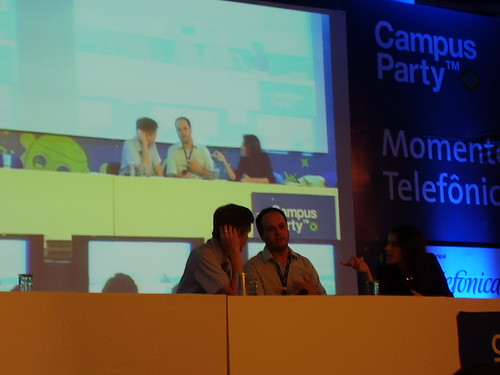Today I did one more Tech Demo about Netbeans and also Sun Academmic Initiative and Community Innovation Awards Program.
Below are the slides (in Portuguese). They are an continuation from those from the last demo. You can also download them in ODP or PDF.
I have really little time to prepare this presentation (one day) but everything goes right. I prepared the slides during the night, took some food, soft drinks and gifts, called the students using our mail list. We had few people but was a good audience for the first weak of the university calendar.

Some guys at the beginning of the demo.
We talked two hours about stuff like:
- Netbeans: Netbeans history, architecture and available modules. We did a demo showing some functionalities and I showed how use Issuezilla to report an bug.
- Sun Academmic Initiative: how can we benefit from the program using Sun Learning Connection and 60% discount for Sun Certifications.
- Community Innovation Awards Program: Sun Microsystems is giving one million dollars for innovations in Open and Free Software. I showed to the students details of the program and how to participate.

Lunch: Sfiha and soda.

We used the JavaFX Wheel of Fortune for give prizes.
The next tech demo will be about one of those themes: JavaFX, Opensolaris or How to develop a module for Netbeans. I’m open for suggestions.
More photos at Flickr.


















































![See in fullscreen [Press F11] Fullscreen](http://btemplates.googlepages.com/fullscreen.gif)




